GREENWICH VILLAGE MOVES TO BROOKLYN (1921)
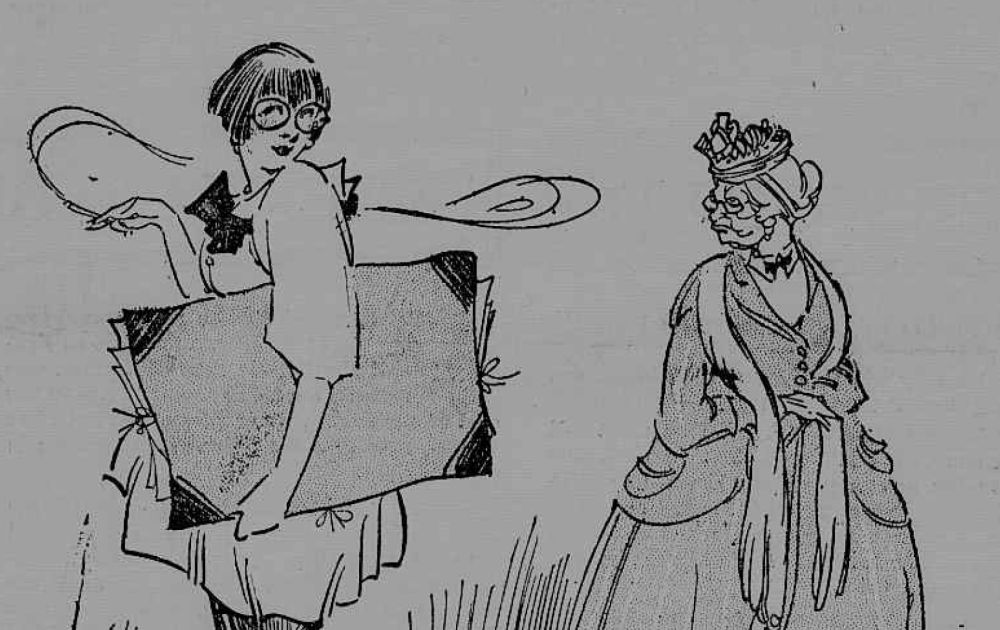
Brownstone Detectives investigates the history of our clients’ homes.
The story you are about to read was composed from research conducted in the course of one of those investigations.
Do you know the history of YOUR house?
********************************************************************************************************************************
“Greenwich Village is moving to Brooklyn. No, there isn’t a catch in it. It’s so.”
So began the cover story of Magazine and Book section of the New York Sun from Sunday, 24 April 1921.
“The new site of village activities,” the article explained, “was Brooklyn Heights.”
And hair was short.
It could have easily been 2017.
THE BOHEMIAN LIFE OF BROOKLYN HEIGHTS
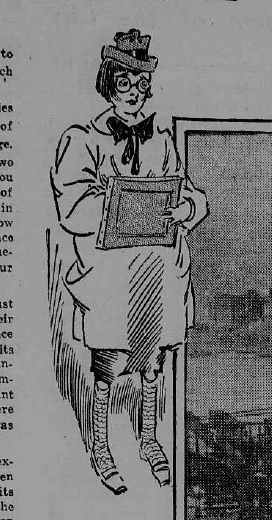 The story, written by Hannah Mitchell – who would later become the editor of The Scarsdale Inquirer – took on the aura of the modern day true-life story associated with the small-town girl who’s moved to New York City in the past 5-10 years, and, finding she could not afford it – because she could not – had determined she would swallow her pride and halve her rent by moving to Bushwick, thus living (and defending) the bohemian life.
The story, written by Hannah Mitchell – who would later become the editor of The Scarsdale Inquirer – took on the aura of the modern day true-life story associated with the small-town girl who’s moved to New York City in the past 5-10 years, and, finding she could not afford it – because she could not – had determined she would swallow her pride and halve her rent by moving to Bushwick, thus living (and defending) the bohemian life.
Mitchell, who justified her move to Brooklyn Heights as just a slide over to another Greenwich Village with benefits, ballyhooed the pros of the Brooklyn Heights apartment and how it far surpassed that of the Greenwich Village.
“From the outside these places are made attractive by little painted panels, frescoes over the doorways, and other quasi-exotic decoration,” Mitchell explained. “Inside they have the virtue of being freshly plastered and varnished. And, best of all, the bathroom situation is more desirable than in any except the two-hundred-a-month apartments of the Village.”
As a matter of fact, she explained, it was the bathroom that caused her to “throw discretion to the winds and move to the Heights.”
After she signed her lease, though, she realized that she was faced now with the ultimate challenge – trying to get a moving van to go to Brooklyn.
O, the travails of the working class girl in New York City.
THEN CAME THE FRIENDS
But, alas, life went well for our storyteller until the one day when she embarrassingly ran into an associate from her old neighborhood.
“Aren’t you lost?” Mitchell jocularly asked, hoping that she would not be discovered.
But her friend was not so coy. She announced quite openly that she, too, had made the move.
“Oh, we’ve moved over here,” the friend unabashedly stated. “Drop in sometime -Schermerhorn Street.”
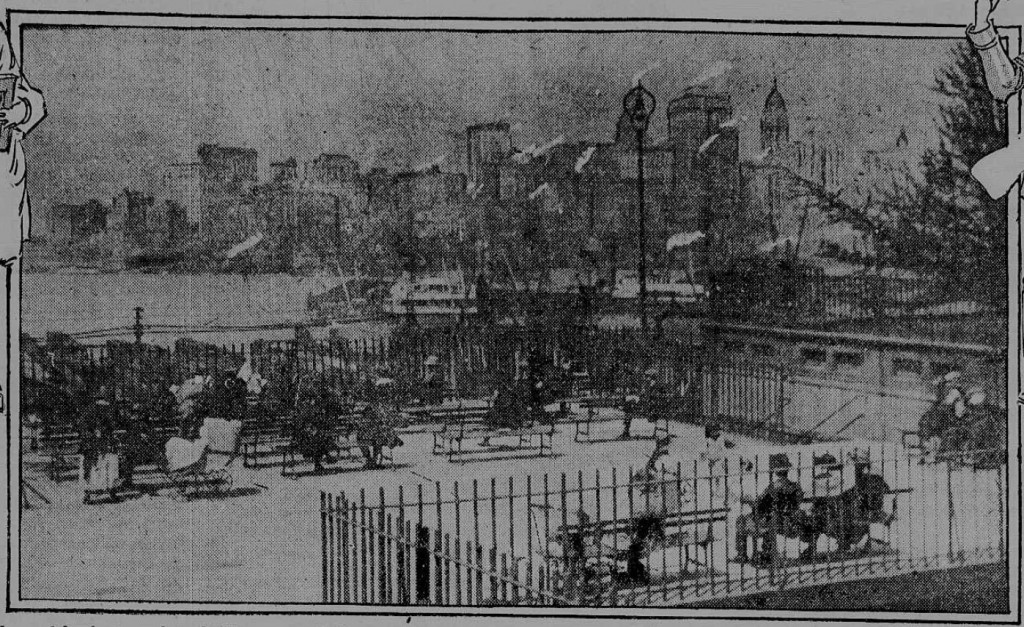
Then a few days later she ran into yet another friend from the Greenwich Village. He was another “Villager” at the subway station purchasing phonograph records.
“Oh, yes – Columbia Heights,” he shouted, “and so-and-so and somebody else, and yet another (all from the Village) live near here. It’s a nice part of town.”
At this point, our reporter would be forgiven if she were to begin to question her embarrassment at finding her new station, only to replace that feeling of self-consciousness with a sudden tang of covetousness associated with those who’ve “discovered” something that they want the world to know they’ve discovered, but at the same time, do not want anyone to have, as well.
“Then two girls with short hair took the apartment under me,” she droned.
THEN CAME THE RESTAURANTS
Yes, then came the restaurants. Those shabby little chic eating establishments that created wonderful and affordable dishes food and provided unduplicated atmosphere, but which also soon became overcrowded with new “discoverers,” as they all wanted to experience these places first-hand.
They were all called “Ye Ole” something or other, Mitchell opined, and they were “the places to be.” Whatever the places or the names, though, she continued, these Heights restaurants where mere replicas of those in the Village, ironically known there as “dumps.”
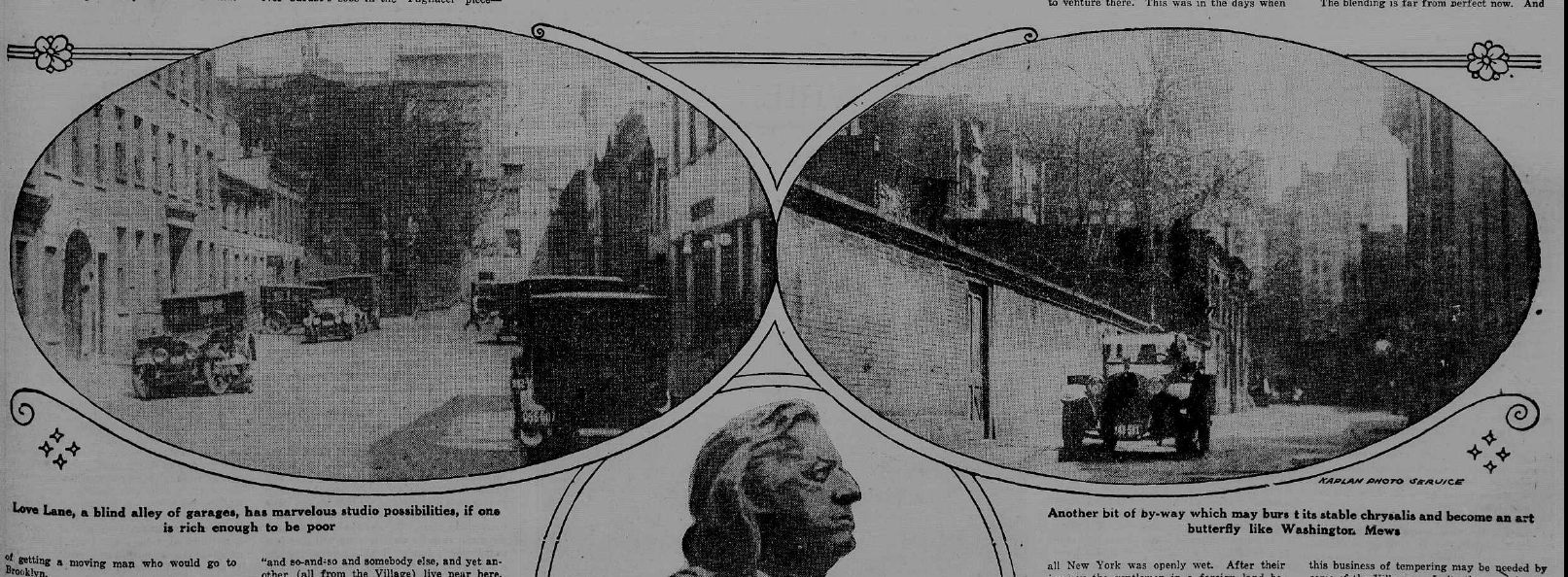
It was a great mixing of the old with the new, though, in Brooklyn Heights. Everywhere you saw the new young artists arriving and making a new home in the Borough, there was still the old characters of the neighborhood going about as they always had, either ignoring the newcomers or existing alongside them with a humored condescension or sense of wonder.
“Girls in tam-o-shanters may swarm the Heights, but kindly old ladies in violet bonnets are there also. Young men in loose green overcoats may swagger along puffing cigarettes, but regulation morning dress for gentlemen is much in evidence, too.
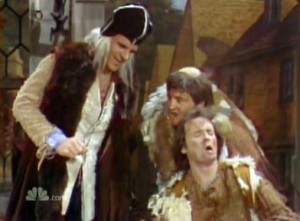 “It may be that these two elements – the conventional, exclusive people of the Heights and the thoughtless Bohemians of the Village – will strike just the right balance. The one will learn tolerance, the other reverence. And as in all things, the newer and younger will predominate, but it will be tempered.”
“It may be that these two elements – the conventional, exclusive people of the Heights and the thoughtless Bohemians of the Village – will strike just the right balance. The one will learn tolerance, the other reverence. And as in all things, the newer and younger will predominate, but it will be tempered.”
But the answer to this contemplation might only come from the likes of Steve Martin as he ended his sketches as Theodoric of York, Medieval Barber, on Saturday Night Live, with similar contemplation and questioning about the potential for change, progress, and unity across cultural divides:
“Naaaaaaaaaaaaaaahhhhhhhhhhhhhh….”
(To read the full story in the original newspaper, see the New York Tribune for 21 April 1921.)
———————————————————————————————————————–
 Brownstone Detectives is an historic property research agency. Our mission is to document and save the histories of our clients’ homes. From our research, we produce our celebrated House History Books and House History Reports. Contact us today to begin discovering the history of your home.
Brownstone Detectives is an historic property research agency. Our mission is to document and save the histories of our clients’ homes. From our research, we produce our celebrated House History Books and House History Reports. Contact us today to begin discovering the history of your home.

[…] Those damn 1920s hipsters, all moving to Brooklyn and stuff. [Brownstone Detectives] […]
[…] Those damn 1920s hipsters, all moving to Brooklyn and stuff. [Brownstone Detectives] […]
[…] Those damn 1920s hipsters, all moving to Brooklyn and stuff. [Brownstone Detectives] […]